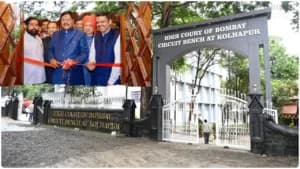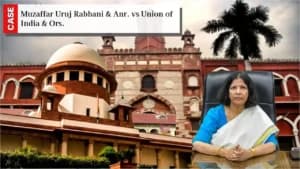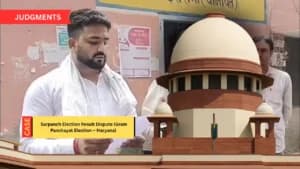The Supreme Court has made it clear that being "last seen together" with the deceased is not enough to convict someone of murder unless strong and supporting evidence is present. In a significant judgment, a man convicted under Section 302 of the Indian Penal Code (IPC) was acquitted after the Court found major flaws in the prosecution’s case.
Read also: Supreme Court Declares Maharashtra’s Zudpi Jungles as Protected Forests, Mandates Strict
The bench, comprising Justices Sanjay Karol and Prashant Kumar Mishra, emphasized the importance of a full and unbroken chain of circumstances in cases based on circumstantial evidence. The Court observed:
"It is settled law that in a case based on circumstantial evidence, the prosecution is obliged to prove each circumstance, taken cumulatively to form a chain so complete that there is no escape from the conclusion that within all human probabilities, crime was committed by the accused and none else."
The case revolved around an incident where the deceased was last seen with the accused near a river and a cashew plantation. The next day, the deceased’s body was discovered floating in the river. The prosecution relied entirely on circumstantial evidence, including the presence of a blood-stained stone near the body and claims of a possible motive involving suspicions of infidelity.
Read also: "In Personal Liberty Cases, High Courts Must Act Swiftly": Supreme Court Grants Bail After 27
However, the Court found several inconsistencies and weaknesses in the prosecution’s argument:
- The time gap between the last sighting and the recovery of the body was not clearly established.
- The blood-stained stone found near the body was not forensically linked to the deceased.
- The alleged murder weapon was not recovered at the accused’s instance.
- There was no memorandum statement or other direct link from the accused to the crime.
- The motive suggested by the prosecution—that the accused was suspicious of his wife's character and acted out—did not logically support harming the deceased, who was his cousin and with whom he had no animosity.
The Court also referred to the precedent set in Kanhaiya Lal vs. State of Rajasthan (2014) 4 SCC 715, where it was held that:
“Evidence on 'last seen together' is a weak piece of evidence and conviction only on the basis of 'last seen together' without there being any other corroborative evidence against the accused, is not sufficient to convict the accused for an offence under Section 302 IPC.”
Read also: Supreme Court Criticizes Indian Navy Over Denial of Permanent Commission to Woman JAG Officer
Addressing the issue of motive, the Court remarked:
“If the appellant has any doubt about his wife's chastity, he would have caused injury or harm to his wife rather than to wife's cousin with whom he had no animosity. Moreover, the so-called weapon of the offence i.e. the stone has not been recovered at his instance nor there is any memorandum statement of the appellant.”
The judgment concluded with a firm statement on the importance of proof beyond doubt:
“Suspicion however so strong, would not replace the proof beyond reasonable doubt... The nature of circumstantial evidence available against the appellant though raises doubt that he may have committed murder but the same is not so conclusive that he can be convicted only on the basis of evidence on 'last seen together'.”
Read also: Supreme Court Highlights Need for More Women in Judiciary to Boost Quality of Justice
In view of these findings, the Supreme Court allowed the appeal and set aside the conviction, reaffirming the principle that every accused is presumed innocent until proven guilty with complete and convincing evidence.
Case Title: PADMAN BIBHAR VERSUS STATE OF ODISHA
Appearance:
For Petitioner(s) : Mr. Shyam Manohar, Adv. Ms. Manju Jetley, AOR
For Respondent(s) :Mr. Shovan Mishra, AOR Mr. Bipasa Tripathy, Adv.










